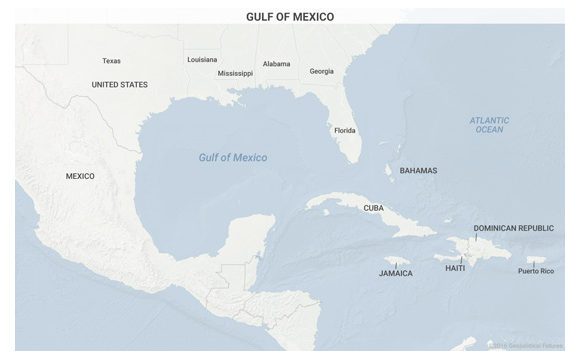First, Jackson asked Sam Houston to organize American settlers in the northeastern section of Mexico and foment an uprising designed to, at the very least, block Mexican access to the region… and at best, create an independent country, the Republic of Texas. This was accomplished in 1836 when Sam Houston defeated Mexican forces under Santa Anna at the Battle of San Jacinto, near today’s Houston.
The second stage took place in 1846 when the United States, now more militarily capable, conducted a broad assault on Mexico, including amphibious operations that led to the capture of Mexico City.
The Mexican-American War achieved three things from the American point of view. First, it crippled Mexican military capabilities for over a century. Second, it created a barrier between Mexico and the United States. After the war, there was a string of deserts and mountains south of the new border that made any possible counter-move by Mexico difficult. Finally, the US took control of all of northwestern Mexican territory, which included present-day California. This made it possible to secure the Louisiana Territory against any potential threat from the west and anchor the United States on the Pacific. It created the framework for the contemporary continental United States.
The defeat of Mexico, the seizure of the northwest, and the lack of a realistic threat from Canada secured the United States in North America and created a new fear: naval threats in the Atlantic and Pacific. The United States was secure from anything but naval action.
From Sea to Shining Sea… Now What?
Again, defense required offensive measures. The first step occurred in 1898, with a coup d’etat in Hawaii that gave the US the only significant anchorage that could threaten the mainland. At the time, ships ran on coal, and they required coaling stations to refuel. With Pearl Harbor in American hands, no ship from Asia could reach the Pacific Coast of the United States.
In the same year, the United States went to war with Spain, seizing Cuba and the Philippines. The seizure of the Philippines gave the United States the first offensive base in the Eastern Hemisphere. The seizure of Cuba made certain that no power could close off the exits from the Gulf of Mexico, and therefore New Orleans.

Yet, the United States retained a primordial fear of Britain because it was the dominant naval power in the world, and although the US was building a substantial fleet, the British still dominated the Atlantic. In spite of neutralizing Cuba, the Bahamas could still block one exit from the Gulf of Mexico. It symbolized the American fear.
It should be added that the threats the US faced were not theoretical. Besides the threat from Mexico, the British still controlled the area north of the United States, and Britain was much more powerful than the United States and imperially ambitious. The United States remained suspicious of British intentions in the northwest, but also harbored a fear of both an offensive south toward New York and a blockade of the East Coast.








